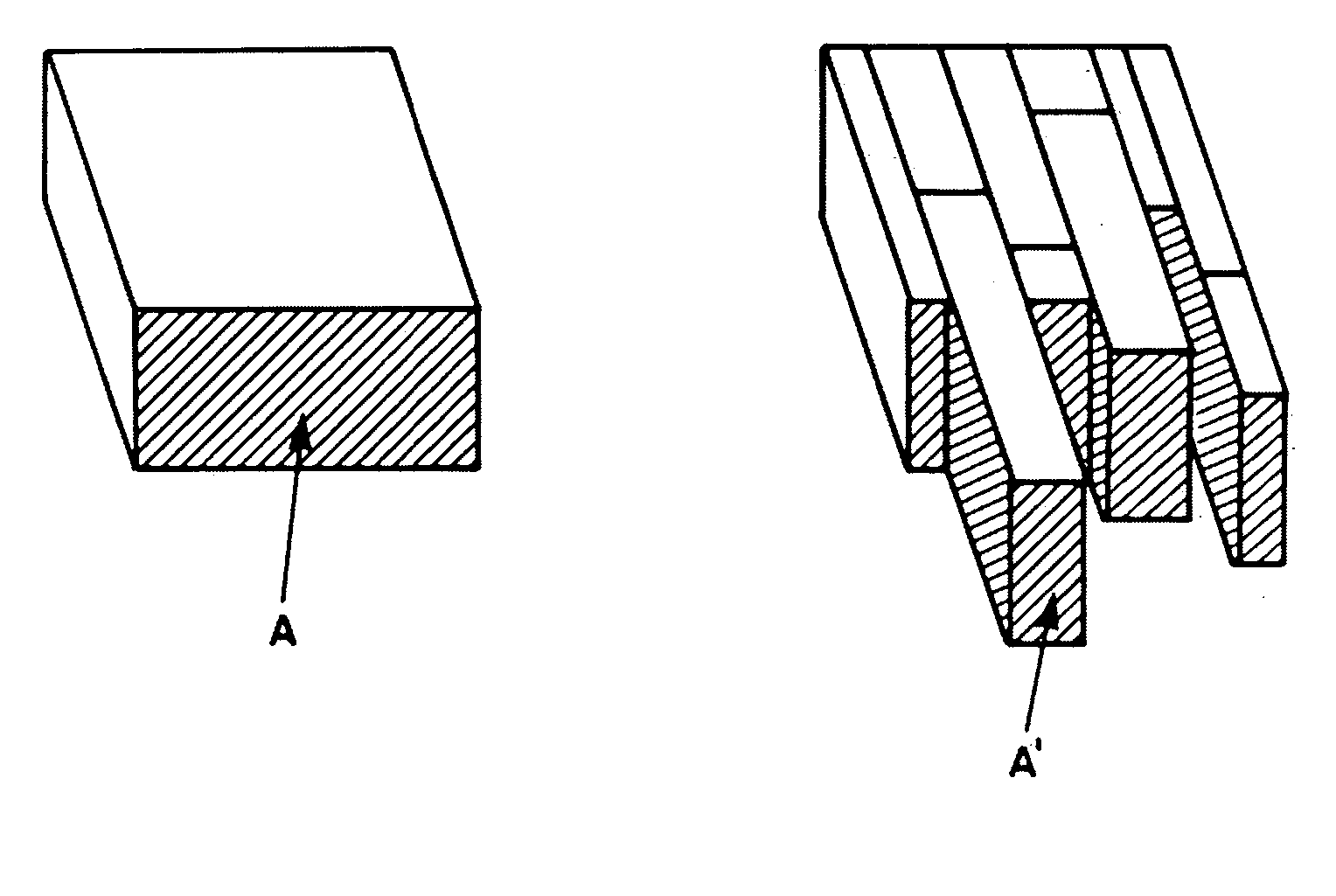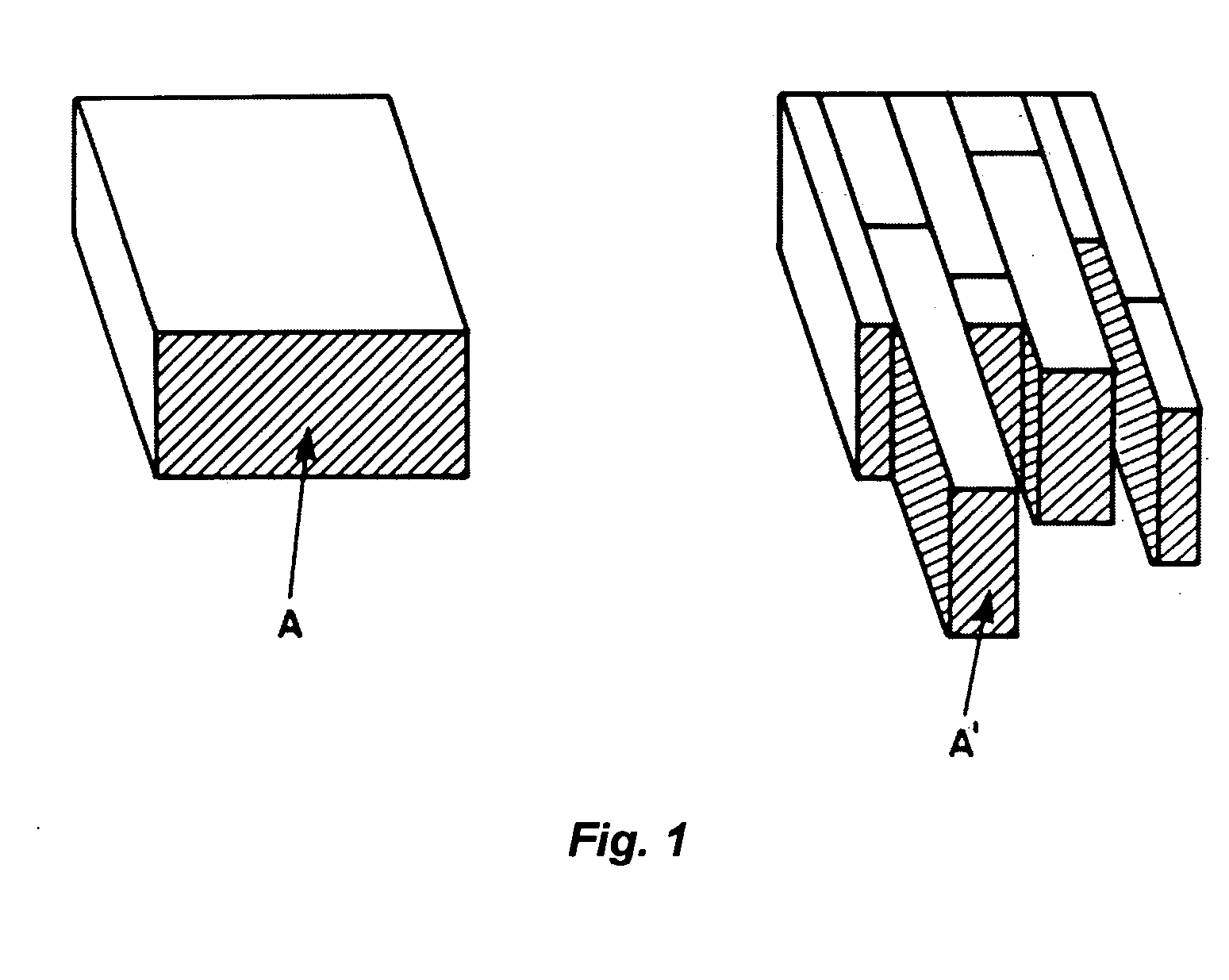Superconductors and methods for making such superconductors
a superconductors and manufacturing method technology, applied in the field of superconductors, can solve the problems of cumbersome and costly processes for the fabrication of such superconductors, and achieve the effects of reducing manufacturing costs, reducing manufacturing costs, and reducing manufacturing costs
- Summary
- Abstract
- Description
- Claims
- Application Information
AI Technical Summary
Benefits of technology
Problems solved by technology
Method used
Image
Examples
example 1
[0039] In the first embodiment, two YBa2Cu3O7−δ tapes are used which are fabricated by a standard RABiTS Procedure. As substrate a Ni-alloy tape, e.g., Ni—W with a thickness in the range of 20 μm to 100 μm, is employed. According to the standard, published procedures, the tape is rolled and heated, so that a surface texture with aligned grains is produced, although the alignment of the grains is not a critical prerequisite for the invention. The surface orientation of the tape (for Ni, e.g. (111)) has to be chosen to be appropriate for the later growth of a superconductor. On such tapes a buffer layer system is deposited. Such a buffer layer, which itself may consist of various sublayers such as CeO2 / YsZ / CeO2, is deposited on the carrier tape to prevent chemical reactions between the high-Tc film and the carrier tape material, or, e.g, the oxidation of the carrier tape during the growth of the superconductor.
[0040] A variety of materials have been found useful as buffer-layers. Bes...
example 2
[0043] The second example is again based on coated conductor tapes, fabricated as described in example 1, the difference being that the buffer layers and superconductors are deposited on both sides of the tapes. After the high-Tc superconductor, e.g. YBa2Cu3O7−δ has been deposited, another layer, the intermediate layer, is grown, which is also superconducting, but has a lower melting temperature than YBa2Cu3O7−δ. As revealed by T. Puig et al. in “Self-seeded YBCO welding induced by Ag additives”, Physica C Vol 363, pages 75-79, such a layer may consist, for example, of a 15 wt % Ag+0.7 YBa2Cu3O7−δ O+0.3Y2BaCuO5 composite, the melting temperature of which is about 40° C. lower than that of YBa2Cu3O7−δ. The superconductors are again placed on top of each other and are heated under slight pressure to a temperature of about 990° C. in an appropriate atmosphere (e.g. 0.5 bar of O2), as revealed by T. Puig et al. A superconductor fabricated this way is sketched as illustration in FIG. 6. ...
example 3
[0044] The superconductor presented as third example is based on a double-sided superconducting tape including a layer with a lower melting temperature than described in example 2. This tape is then rolled up, as sketched in FIG. 7, and welded together like the superconductor in example 2.
[0045] In a modification of this embodiment, a tape covered with a superconducting layer, possibly even on one side only, is folded such that the superconducting layer is folded onto itself and a superconducting contact is established between various areas of one single superconducting layer. This folding step can be repeated several times to obtain a stack of superconducting double-layers.
[0046] It obvious to persons working in the field of superconductivity that, by using the invention, not only tapes for current transport can be fabricated, but that the invention also lends itself for the production of superconductors to be used for other purposes. By using the invention it is readily possible...
PUM
| Property | Measurement | Unit |
|---|---|---|
| length | aaaaa | aaaaa |
| Tc superconductors | aaaaa | aaaaa |
| thickness | aaaaa | aaaaa |
Abstract
Description
Claims
Application Information
 Login to View More
Login to View More - R&D
- Intellectual Property
- Life Sciences
- Materials
- Tech Scout
- Unparalleled Data Quality
- Higher Quality Content
- 60% Fewer Hallucinations
Browse by: Latest US Patents, China's latest patents, Technical Efficacy Thesaurus, Application Domain, Technology Topic, Popular Technical Reports.
© 2025 PatSnap. All rights reserved.Legal|Privacy policy|Modern Slavery Act Transparency Statement|Sitemap|About US| Contact US: help@patsnap.com



